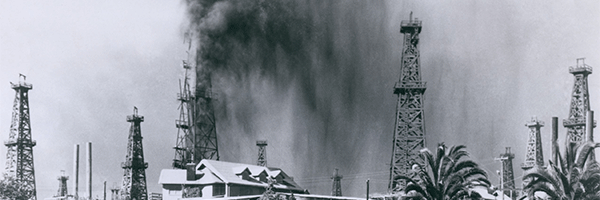The Organization of Petroleum Exporting Countries and its affiliated oil producers (OPEC+) abandoned their Monday meeting after days of tense talks failed to result in an agreement on a tentative deal to increase production, and even over how to measure production. The disagreement between Saudi Arabia snd the United Arab Emirates was so heated that OPEC+ couldn’t even agree on a date for its next meeting. When these two countries last clashed in December 2020, the UAE talked of leaving OPEC.
Oil prices initially jumped to its highest level in more than six years on news that OPEC+ had failed to agree to increase production. But prices then fell as traders speculated that the failure to reach an agreement on production increases would result in unplanned increases in production.
U.S. benchmark West Texas Intermediate crude closed at $73.73 a barrel, down 1.43%, after an earlier spike to $76.98. International benchmark Brent crude dropped 2.31% to $74.85 a barrel.
The collapse of the OPEC+ talks led to volatility everywhere as traders struggled to figure out how the news would affect the dollar, inflation, interest rates, and economic growth. And on what time scale.
The immediate result of the collapse in talks is that the output hike expected for August won’t take place. That, in this short run, is likely to result in higher oil prices. Today, for example, state-run Saudi Aramco increased the prices of its Arab Light crude and other grades for August delivery.
But over the medium term, the collapse could lead to an increase in production. For example, commodities traders reported that many U.S. oil shale producers jumped on the early surge in prices to lock in higher prices for their future production. That’s likely to result in an increase in U.S. production. Russia has been violating existing OPEC+ production agreements by over-producing and now there’s no reason not to continue that practice or to produce even more. The UAE wanted to expand production, claiming at the meeting that it can pump much more than the 3.2 million barrels a day quota under the current OPEC+ agreement. The country wanted an increase to 3.8 million barrels daily in exchange for extending the supply agreements signed in April 2020 until the end of 2022. In essence the UAE claimed that it was suffering more under the agreement than other OPEC members and should be allowed to increase production. The Saudis disagreed–both on the extend of UAE pain and on increasing production.
It’s not at all clear how the collapse of the OPEC meeting will affect the prices of other assets–to a great degree because no one yet knows what the effects of the collapse will be on oil production.
Today, the dollar climbed slightly, as it often does when the price of oil goes up, with the Dollar Spot Index (DXY) gaining 0.35%. I don’t know how much if any of that gain in the dollar is based on market sentiment that higher oil prices would result in more inflation that might prompt the Federal Reserve to raise interest rates sooner rather than later. At this point I can certainly make a counter argument that higher oil prices would reduct global economic growth and that would reduce the chances that the Fed will raise interest rated.
The trend in prices for other global commodities was downward. Copper, for example, fell 0.58% for September delivery on the New York Comex. The prices of commodity stocks fell too with, for example, lithium producer Albemarle (ALB) dropping 1.22% at the close today and Souther Copper (SCCO) falling 2.73%. Gold, in contrast moved higher with Barrick Gold (GOLD) gaining 2.40% and the Van Eck Vectors Gold Miners ETF (GDX) gaining 0.29%.
In my opinion, the move in gold was probably related to an uptick in volatility fears resulting from today’s uncertainty. The CBOE S&P 500 Volatility Index (VIX) closed up 9.09% on the day to 16.44.
The yield on the 10-year U.S. Treasury retreated to 1.35%, matching the March low. As is logical bank stocks fell too–on the assumption that a tighter interest rate spread would hurt bank profits. JPMorgan Chase (JPM) lost 1.68%. Bank of America (BAC) retreated 2.62%. Well Fargo (WFC), one of the big gainers last week from the Fed’s stress test decision to let banks increase dividend and buybacks, dropped 3.51%.
The wider stock market action followed recent pattern with traders and investors selling reopening/recovery/reflation stocks such as MGM Resorts (MGM), down 4.62% on the day, and cyclicals such as Caterpillar (CAT),off 1.95%. And buying high growth technology shares on the bet that if the economy is going to slow these stocks will still be able to deliver high revenue and earnings growth. So high growth momentum shares such as Twilio (TWLO) and Square (SQ) picked u 1.47% and 2.33%, respectively.
The strongest sector on the day was undoubtedly cybersecurity (Hey, nothing like news that ransoms in ransomware attacks are going way up in price to juice a sector) with Crowdstrike (CRWD) gaining 4.91% and Palo Alto Networks (PANW) picked up 5.12%.
The S^P 500 was down 0.20 and the Dow Jones Industrial Average lost 0.60%. But the NASDAQ Composite gained 0.17% and the NASDAQ 100 moved higher by 0.40%.
The two big index losers on the day were the small cap Russell 2000 index, which dropped 1.36% on fears of slowing economic growth on higher oil prices, and the iShares MSCI Emerging Markets ETF (EEM), which lost 1.79% on the day, on those fears of slowing economic growth, lower commodity prices, and a stronger dollar.


